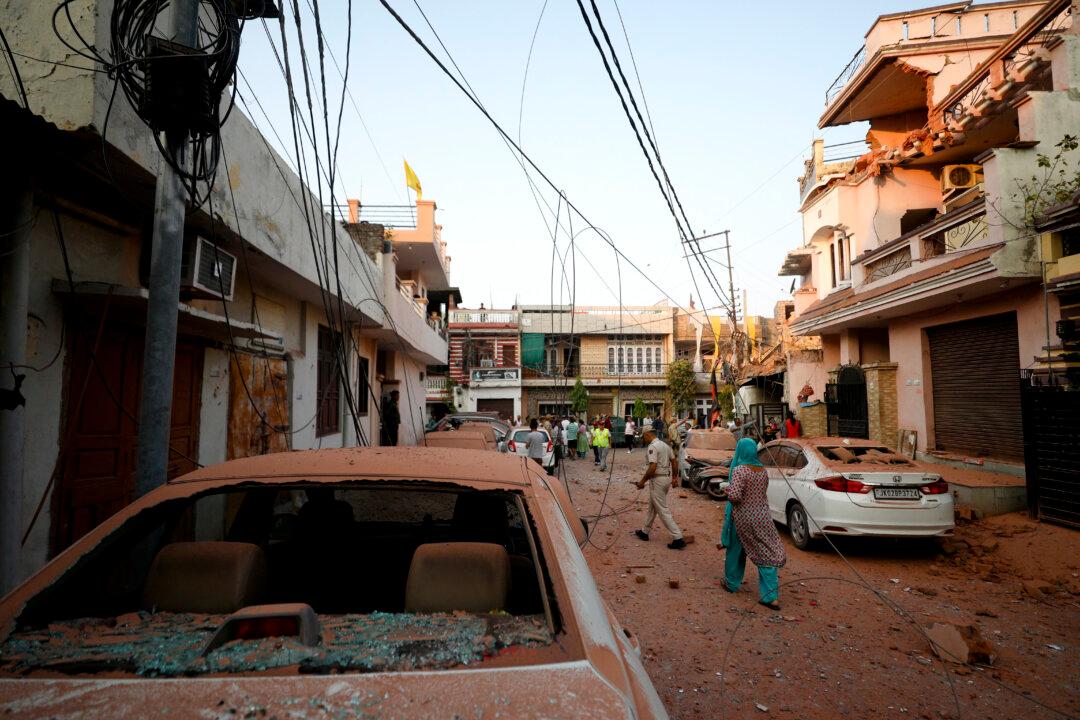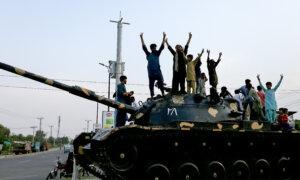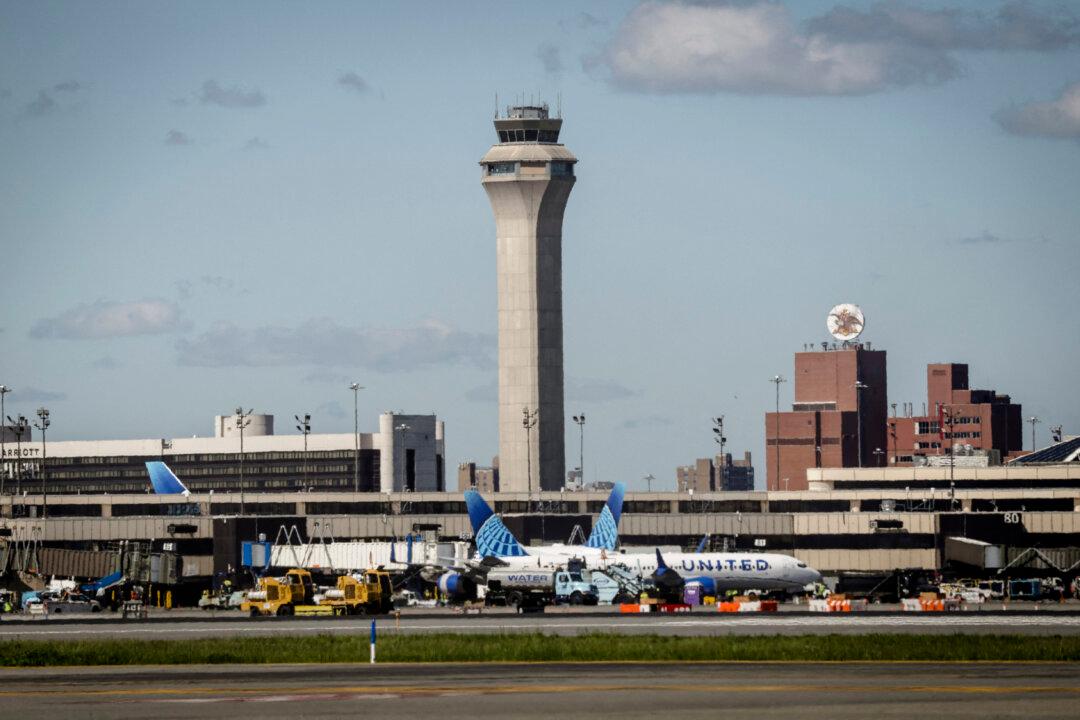India and Pakistan were still upholding a cease-fire on May 11, following accusations that each side was to blame for the initial military violations.
The Indian military warned Pakistan on May 11 against violating a cease-fire the two nations agreed to this week, sending its northern neighbor a “hotline message” vowing to respond if the violations are repeated, according to a top Indian army official.
The fragile cease-fire, which was enacted on May 10 after four days of continued attacks between the two neighboring nuclear military powers, appeared to be enduring on Sunday after both sides accused each other of violating it on Saturday night.
In what has been the worst fighting between India and Pakistan in nearly three decades, both fired missiles and drones at each other’s military targets, leading to almost 70 deaths.
Lt. Gen. Rajiv Ghai, India’s director general of military operations, discussed the cease-fire during a media briefing, saying, “Sometimes, these understandings take time to fructify, manifest on the ground.”
“The [Indian] armed forces were on a very very high alert [yesterday] and continue to be in that state,” he said.
Ghai said his counterpart in Pakistan reached out on Saturday afternoon in a call to “cease hostilities” and negotiate an immediate cease-fire.
Pakistani officials offered no immediate response to India’s comments.
The Trump administration has also been engaged in direct talks with the two nations to negotiate an end to the fighting.
While U.S. diplomacy and pressure have helped secure the cease-fire deal, just hours after it materialized, artillery fire was seen in Indian Kashmir, which saw much of last week’s fighting.
According to local authorities, blasts from air-defense systems were heard in cities near the border under a blackout, which were similar to those described during the previous two days.
Pakistan responded by saying it was committed to the truce and blamed India for breaking it.
Pakistan’s Prime Minister Shehbaz Sharif addressed his nation late on the evening of May 10, declaring “victory” and casting India as the aggressor.
“India, because they are so proud, they just tried their best to attack our borders through drone attacks, through missiles, and they have also taken innocent lives,“ he said. ”They have destroyed mosques. They wanted to target all those places that were very precious to us, and we then decided we were going to retaliate in the same way.”
On May 11, India’s army chief granted army commanders “full authority” to engage in “counteraction in the kinetic domain” regarding any violations of the understanding between the two nations, according to an army statement.
U.S. President Donald Trump on May 10 praised the two countries’ leaders for agreeing to cease fighting and offered to “substantially” increase trade with India and Pakistan.
Kashmir, an area located within the Himalayan region, is claimed in full by both nations, as Hindu-majority India and Muslim-majority Pakistan each rule a portion of it.
Both countries have gone to war twice over control of Kashmir.
India has blamed Pakistan for supporting Kashmiri separatists, who have engaged in an insurgency in India’s portion of the territory. Pakistan has suggested that it only offers moral, political, and diplomatic support to the fighters.
In response to Trump’s statement, Pakistan’s Foreign Ministry said, “Any just and lasting settlement of the Jammu and Kashmir dispute ... must ensure the realisation of the fundamental rights of the Kashmiri people, including their inalienable right to self-determination.”
Despite the ongoing cease-fire, the Indian air force said in a midday X post on May 11 that military operations continue.
India’s head of military operations, Lt. Gen. Rajiv Ghai, said at a news conference in New Delhi on May 11 that its strikes into Pakistan-controlled Kashmir and Pakistan earlier this week killed more than 100 militants, including their prominent leaders.
India’s armed forces struck nine militant infrastructure and training facilities, Ghai added, including sites of the Lashkar-e-Taiba group that India blames for carrying out major militant strikes in India and the disputed region of Kashmir.
There had been some firing witnessed in Pakistani Kashmir’s Bhimber on the night of May 10, but there were no casualties, according to Pakistani officials.







